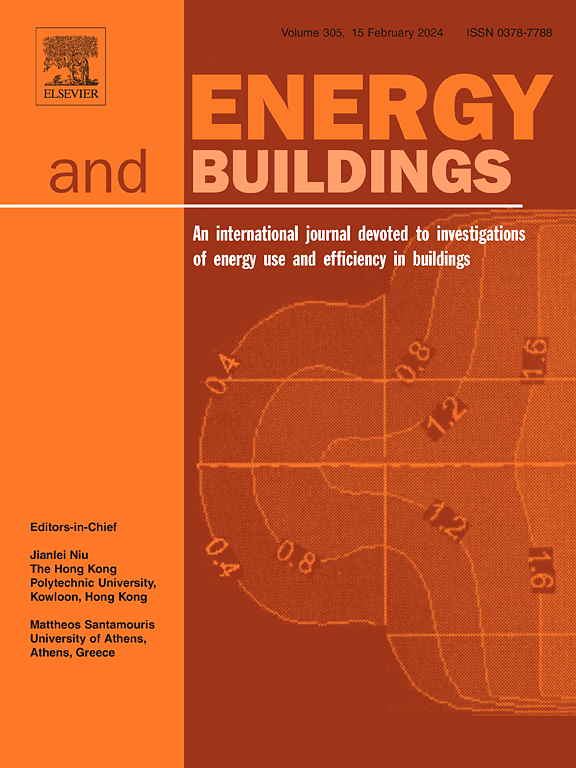某生物安全4级实验室能源效率分析及生命周期评价
IF 6.6
2区 工程技术
Q1 CONSTRUCTION & BUILDING TECHNOLOGY
引用次数: 0
摘要
近年来,传染病的全球威胁促使各国加大建设高水平生物安全实验室的力度。然而,生物安全实验室在运行过程中的高能耗导致其利用率较低。本研究以西南地区生物安全4级(BSL-4)实验室为研究对象,在保证安全的前提下进行能源优化。研究发现,BSL-4级实验室的供暖、通风和空调(HVAC)系统消耗的能源是标准办公室的4.3倍。通过减少换气次数和对废气进行热回收,可以分别节省36%和35%的能源。此外,开发了完整的生命周期评估(LCA)模型,发现运营阶段对环境的影响最高,为48%。因此,建议执行高-低交互策略,每年节省25% - 28%的能源,减少24-27吨的碳排放;优化可再生能源后,BSL-4实验室的能源回收期和温室气体回收期分别为9.2年和6.1年。该研究的生命周期评估模型和推荐的节能方案有助于BSL高效的能源设计和运行。本文章由计算机程序翻译,如有差异,请以英文原文为准。
Energy efficiency analysis and life cycle assessment of a biosafety level 4 laboratory
In recent years, the global threat of infectious diseases has prompted countries to increase the construction of high-level biosafety laboratories (BSLs). However, the high energy consumption in the operation of biosafety laboratories leads to their low utilization rate. In this study, a biosafety level 4 (BSL-4) laboratory in Southwest China was used for energy optimization while ensuring safety. It was found that the heating, ventilation, and air conditioning (HVAC) system in a BSL-4 laboratory consumes 4.3 times more energy than in a standard office. Energy savings of 36 % and 35 % could be achieved by reducing the number of air changes and performing heat recovery of exhaust gases, respectively. In addition, a complete Life Cycle Assessment (LCA) model was developed and it was found that the operational stage had the highest environmental impact of 48 %. As a result, it was proposed to perform a high-low interaction strategy that saves 25 %–28 % of energy and reduces carbon emissions by 24–27 tons per year; after optimizing renewable energy sources, the energy payback time and greenhouse gas payback time of the BSL-4 laboratory are 9.2 and 6.1 years, respectively. The study’s life cycle assessment modeling and recommended energy savings scenarios contribute to efficient energy design and operation at BSL.
求助全文
通过发布文献求助,成功后即可免费获取论文全文。
去求助
来源期刊

Energy and Buildings
工程技术-工程:土木
CiteScore
12.70
自引率
11.90%
发文量
863
审稿时长
38 days
期刊介绍:
An international journal devoted to investigations of energy use and efficiency in buildings
Energy and Buildings is an international journal publishing articles with explicit links to energy use in buildings. The aim is to present new research results, and new proven practice aimed at reducing the energy needs of a building and improving indoor environment quality.
 求助内容:
求助内容: 应助结果提醒方式:
应助结果提醒方式:


